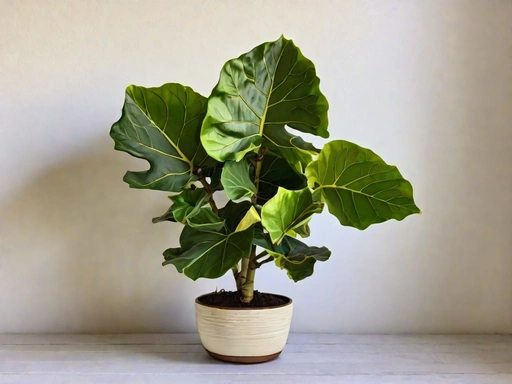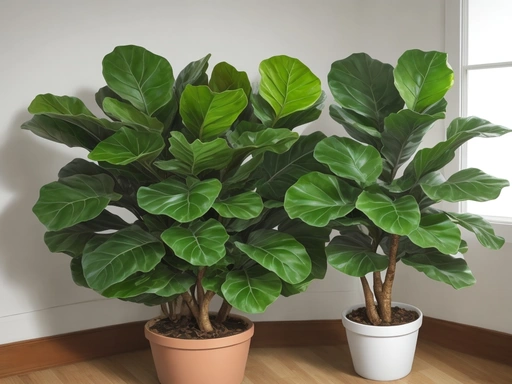Fiddle-Leaf Fig Pruning Techniques Made Easy. Simplified. Optimized
Key Takeaways:
- Prune fiddle-leaf figs selectively to maintain a balanced shape and size.
- Remove dead leaves and branches regularly to promote healthy growth.
- Cut back excessive growth to prevent overcrowding and maintain air circulation.
- Pruning during early spring or summer is ideal for encouraging new growth.
Are you a proud fiddle-leaf fig parent? If so, I’m sure you’ve marveled at the beauty of this stunning houseplant.
But have you ever wondered how to keep your fiddle-leaf fig not just alive, but thriving?
Well, I’m here to guide you through the world of fiddle-leaf fig pruning techniques. Pruning is a crucial aspect of maintaining a healthy and visually appealing plant, and in this article, we’ll explore why it’s important, when to do it, and the step-by-step process for achieving optimal results.
So grab your pruning shears, and let’s dive into the fascinating world of fiddle-leaf figs!
| Technique | Description |
| Pinching | Thumb and forefinger are used to remove the top portion of the stem, encouraging bushier growth. |
| Trimming | Selective cutting of longer stems to maintain shape and size of the plant. |
| Pruning | Removal of larger branches to control the overall shape and size of the plant. |
Understanding the Fiddle-leaf Fig Plant
The Fiddle-leaf fig plant is a popular indoor plant known for its large, violin-shaped leaves.
Common Traits and Characteristics of Fiddle-leaf Fig Plants
Fiddle-leaf fig plants are known for their large, glossy leaves that resemble a violin or fiddle. They have a tropical and exotic appearance, making them a popular choice for indoor plants.
These plants can grow quite tall, reaching heights of 6 feet or more.
Fiddle-leaf figs thrive in bright, indirect light and prefer consistently moist soil. They are sensitive to changes in temperature and may drop their leaves if exposed to cold drafts or extreme temperatures.
Overall, fiddle-leaf fig plants make a stunning addition to any home or office space.
Why is Pruning Important for Fiddle-leaf Fig Plants?
Pruning is crucial for fiddle-leaf fig plants because it helps promote healthy growth and maintain their desired shape.
Benefits of Pruning Fiddle-leaf Fig Plants
Pruning fiddle-leaf fig plants offers several benefits.
It helps the plant maintain its shape and size, preventing it from becoming too large or leggy.
Pruning also encourages new growth, leading to a bushier and fuller plant.
It can improve air circulation, reducing the risk of pests and diseases.
Additionally, pruning removes dead or damaged leaves, improving the overall appearance of the plant.
When to Prune Fiddle-leaf Fig Plants
Fiddle-leaf fig plants should be pruned in the spring or early summer when they are actively growing. This is the best time to encourage new growth and shape the plant.
Avoid pruning in winter as this can slow down the plant’s growth.
Tools and Materials Needed for Pruning Fiddle-leaf Fig Plants
To properly prune your fiddle-leaf fig plants, you’ll need a few essential tools and materials.
Essential Tools for Pruning Fiddle-leaf Fig Plants
To prune your fiddle-leaf fig plant effectively, you’ll need a few essential tools.
Here are the tools you’ll need:
- Pruning shears or scissors: These will be used to make clean cuts on the branches and leaves of your fiddle-leaf fig.
- Gloves: Gloves will protect your hands from any potential thorns or irritants on the plant.
- Disinfectant: Before and after pruning, it’s important to clean your tools with a disinfectant to prevent the spread of diseases.
- Clean cloth or paper towels: Use these to wipe down your tools and remove any sap or residue after pruning.
That’s it! With these basic tools, you’ll be ready to prune your fiddle-leaf fig plant and keep it looking healthy and well-maintained.
Safety Precautions to Consider
When pruning your fiddle-leaf fig plant, it’s important to consider safety precautions to avoid any accidents or injuries. Here are some key safety measures to keep in mind:
- Wear protective gloves and clothing to protect your hands from thorns or scratches.
- Use sharp and clean pruning tools to ensure clean cuts and reduce the risk of infections.
- Make sure your tools are properly sanitized to prevent the spread of diseases.
- Work in a well-ventilated area to avoid inhaling any debris or dust.
- Use caution when using ladders or step stools to reach higher branches.
- Take breaks frequently to avoid fatigue and maintain focus.
- Be mindful of your surroundings and avoid pruning near power lines or other hazards.
- Dispose of pruned branches properly to prevent tripping or injuring yourself or others.
Remember, safety should always be your top priority when pruning your fiddle-leaf fig plant.
Step-by-Step Guide to Pruning Fiddle-leaf Fig Plants
Ready to learn the step-by-step process for pruning your fiddle-leaf fig plants?
Let’s get started!
Assessing the Health and Shape of the Plant
Assessing the health and shape of your fiddle-leaf fig plant is crucial before pruning. Look for signs of disease, pests, or damage.
Check the overall appearance and color of the leaves.
Trim any dead or yellowing leaves. Consider the plant’s shape and balance to determine where pruning is needed.
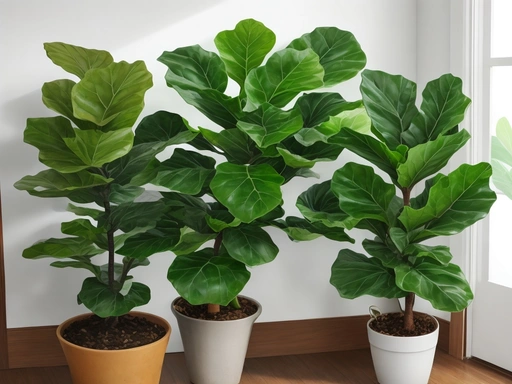
Preparing the Plant and Workspace
To prepare your fiddle-leaf fig plant and workspace for pruning, start by gathering your tools: sharp pruning shears, rubbing alcohol, and gloves.
Next, find a well-lit area with enough space to move around comfortably.
Clean the tools with rubbing alcohol to prevent the spread of disease.
ensure your fiddle-leaf fig plant thrivesnd hydrated before beginning the pruning process.
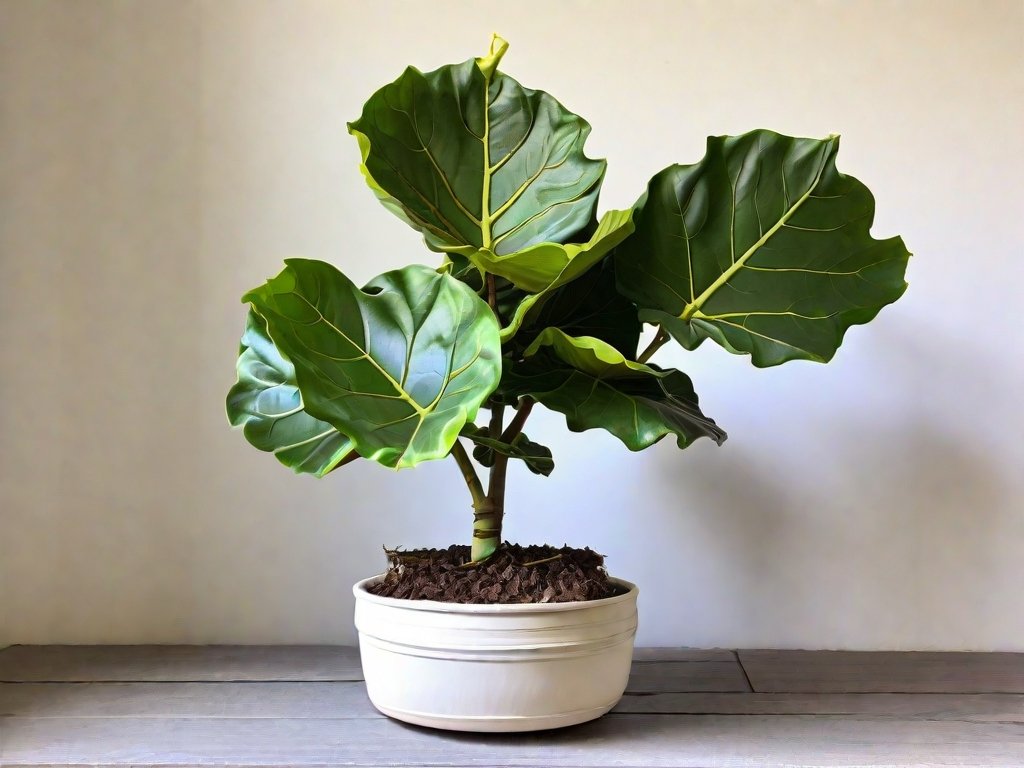
Pruning Techniques for Different Parts of the Plant
When pruning your fiddle-leaf fig plant, here are some techniques to keep in mind for different parts of the plant:
- Pruning the branches: Trim away any dead, diseased, or damaged branches. Cut just above a leaf node or bud to encourage new growth.
- Trimming the leaves: Remove any yellow or brown leaves to enhance the overall appearance of the plant. Cut close to the main stem to avoid stubs.
- Shaping the plant: To control the size and shape of your fiddle-leaf fig, prune the tips of the branches. This will promote bushier growth and prevent the plant from becoming too leggy.
- Controlling height: If your plant is getting too tall, you can prune the top portion of the main stem to encourage branching and create a more compact shape.
Remember to use clean and sharp pruning tools to prevent damage and make clean cuts.
Additionally, always assess the health and shape of the plant before pruning and avoid over-pruning, as this can stress the plant.
Caring for a Pruned Fiddle-leaf Fig Plant
Caring for a pruned fiddle-leaf fig plant involves proper watering and fertilizing. It also requires providing adequate lighting and temperature while avoiding common mistakes.
Watering and Fertilizing after Pruning
After pruning your fiddle-leaf fig plant, it’s important to adjust your watering and fertilizing routine.
Water the plant thoroughly but allow the top inch of soil to dry out before watering again.
Avoid overwatering, as this can lead to root rot.
As for fertilizing, wait at least a month after pruning before resuming regular fertilization.
Use a balanced liquid fertilizer, following the instructions on the label.
Regularly check the moisture level and adjust your watering accordingly.
Providing Adequate Lighting and Temperature
Adequate lighting and temperature are crucial for the health of your fiddle-leaf fig plant. Place it near a bright, indirect light source, such as a window with filtered sunlight.
Avoid extreme temperature fluctuations and keep it in a warm, stable environment (around 65-75°F).
Proper lighting and temperature will help your plant thrive!
Common Mistakes to Avoid after Pruning
After pruning your fiddle-leaf fig plant, it’s important to avoid these common mistakes:
- Overwatering: Give your plant time to recover before watering, as it can be more susceptible to root rot after pruning.
- Exposing to direct sunlight: Gradually reintroduce your plant to sunlight to prevent sunburn on the newly exposed leaves.
- Not providing support: If your plant has been pruned heavily, use stakes or ties to support the remaining branches and promote upright growth.
- Skipping fertilization: After pruning, your plant may benefit from a gentle dose of balanced fertilizer to promote healthy growth.
- Neglecting regular maintenance: Keep an eye on your plant’s overall health and continue to provide proper care, including regular watering, checking for pests, and cleaning the leaves.
By avoiding these mistakes, you can help your fiddle-leaf fig plant recover successfully and thrive after pruning.
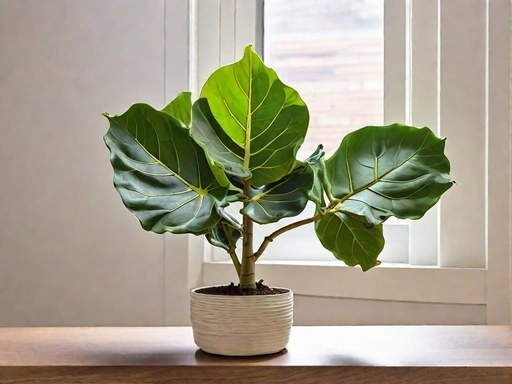
Troubleshooting Pruning Issues for Fiddle-leaf Fig Plants
Sometimes, fiddle-leaf fig plants may encounter issues after pruning.
Let’s explore some troubleshooting techniques to address these problems.
Dealing with Pests and Diseases
Dealing with pests and diseases can be challenging, but with proper care and attention, you can keep your fiddle-leaf fig plant healthy.
Here are a few tips to help you handle common issues:
- Identify the problem: Look for signs of pests like spider mites, mealybugs, or scale insects. Diseases like root rot or fungal infections can also occur.
- Isolate the plant: If you notice any pests or diseases, isolate the affected plant to prevent the issue from spreading to other plants.
- Natural remedies: For pests, you can use a mixture of water and mild soap to wipe away insects. Neem oil is also effective. For diseases, ensure proper watering and ventilation to prevent fungus growth.
- Insecticides and fungicides: If the issue persists, you may need to use insecticides or fungicides specifically formulated for indoor plants. Follow the instructions carefully.
- Regular care: Maintain a clean and healthy environment for your plant. Regularly wipe the leaves, inspect for pests/diseases, and avoid overwatering.
Remember, prevention is key! Keep a close eye on your plant, provide optimal conditions, and practice good hygiene to keep pests and diseases at bay.
Reviving an Over-Pruned or Damaged Plant
If your fiddle-leaf fig plant has been over-pruned or damaged, there are some steps you can take to revive it.
First, make sure the plant is in a suitable environment with proper lighting and temperature.
Give it a good watering and apply a balanced fertilizer.
Trim any dead or damaged leaves and branches, but be careful not to over-prune again.
Monitor the plant closely and adjust care as needed.
Remember to be patient, as it may take time for the plant to recover.
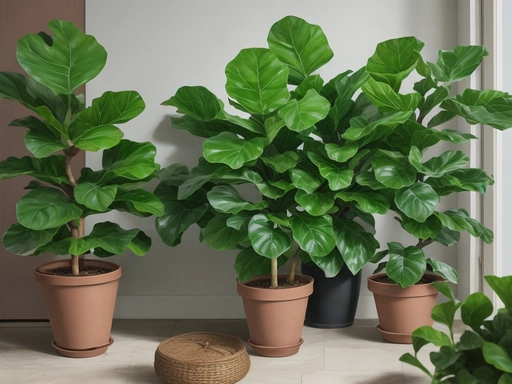
Frequently Asked Questions about Pruning Fiddle-leaf Fig Plants
How often should I prune my fiddle-leaf fig plant?
To keep your fiddle-leaf fig plant healthy and looking its best, it’s generally recommended to prune it once a year.
However, the frequency of pruning can vary depending on the growth rate and size of your plant.
Checking for any dead or damaged leaves and branches and removing them as needed throughout the year is also a good practice.
Just remember not to over prune, as this can stress the plant.
Can I propagate the cuttings from pruning?
Yes, you can absolutely propagate the cuttings from pruning your fiddle-leaf fig plant. Simply take a stem cutting, remove the lower leaves, and place it in water or a moist potting mix.
Keep it in a warm, well-lit area and watch as new roots begin to develop.
Once the roots are established, you can transfer the cutting to its own pot and continue to care for it as a separate plant.
What should I do if I accidentally cut too much?
If you accidentally cut too much off your fiddle-leaf fig plant, don’t panic! The first thing you should do is assess the extent of the damage.
If the plant is severely pruned, it might struggle to recover.
However, if it’s a minor trim gone wrong, the plant should be able to bounce back with proper care.
Keep the plant in a well-lit area, maintain the right temperature and humidity, and provide regular watering.
It’s also helpful to avoid further stressors like moving the plant or introducing fertilizer right away.
With patience and care, your fiddle-leaf fig should eventually recover.
Final Verdict
Understanding and implementing proper pruning techniques for fiddle-leaf fig plants is crucial for their overall health and appearance. Pruning helps to promote growth, maintain shape, and prevent disease.
By assessing the health of the plant, using the right tools, and following the step-by-step guide provided, you can effectively prune your fiddle-leaf fig plant.
Remember to care for your pruned plant properly, providing adequate lighting, temperature, and avoiding common mistakes. Lastly, troubleshoot any issues that may arise, such as pests or over-pruning, to ensure your fiddle-leaf fig plant thrives.





